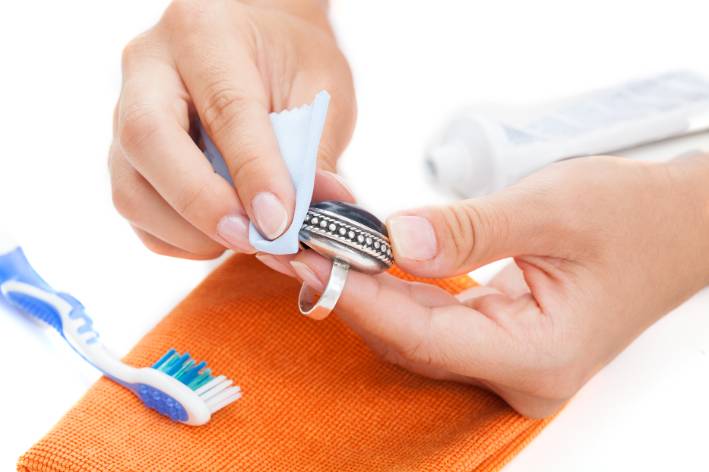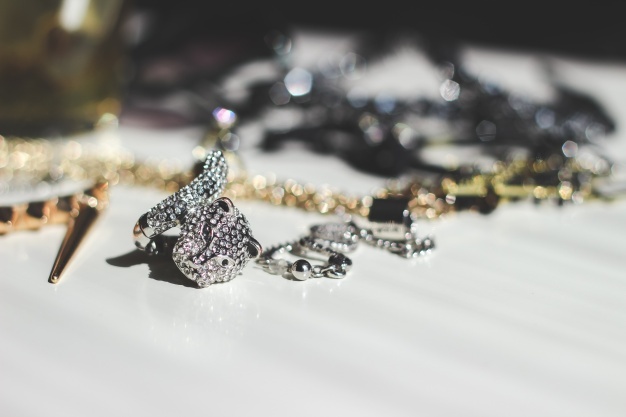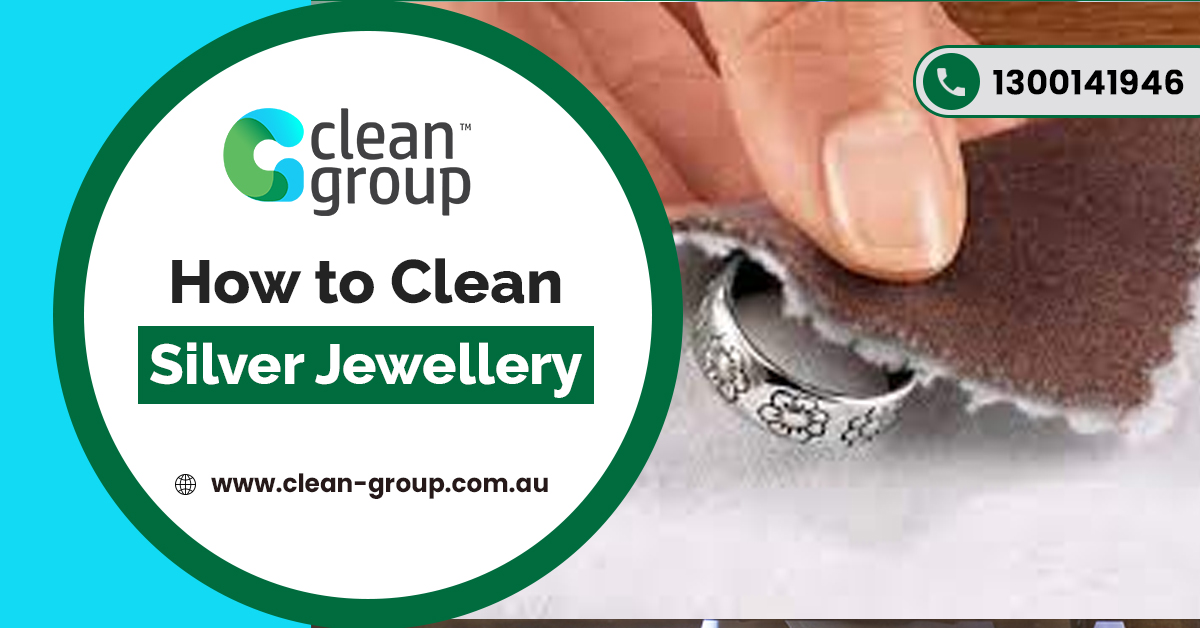Did you know that simple procedures and common household items can be used to clean your silver jewellery? These methods remove tarnish and restore necklaces, rings, and other valuable items.
Cleaning your jewellery, particularly those silver items that degrade so easily, is probably not at the top of your agenda, unlike vacuuming the floors or wiping down countertops.
This often-ignored commercial cleaning task can be easy to forget about because the silver accessories we wear daily, such as your favourite necklace or the silver earrings you never take off, don’t always deteriorate quickly. These commonly worn pieces usually only require a light polish every now and again.
Dainty silver jewellery that has been sitting on trays or in boxes for a long time, oxidizing due to exposure and lack of usage, may require a more rigorous scouring. We show you how to clean silver jewellery with easy-to-follow DIY methods for removing tarnish and restoring shine.
How to Clean Silver Jewellery

Because silver is a soft, glossy metal, you have to clean it with care. When it comes to cleaning everyday jewellery, a solution of mild dishwashing soap and warm water, or even baby shampoo, typically suffice. This procedure is very effective for cleaning gold jewellery.
- Mix warm water with a few drops of liquid dish soap in a bowl – combine all of the ingredients until bubbles form.
- Soak the jewellery for five to 10 minutes in the solution.
- Clean any nooks with a soft-bristle brush, for example, a toothbrush.
- Rinse the pieces in warm water.
- To dry, use a microfiber towel or silver cloth to gently wipe the jewellery. Paper towels should not be used since they can scratch the silver.
Fine silver jewellery with diamonds or other precious stones can be cleaned with water and soap. However, before cleaning valuables, consult a jeweller or have the object professionally cleaned at the Clean Group to take extra precautions.
A good silver polish has ingredients that remove and dissolve tarnish while leaving behind a protective layer to prevent more tarnish from formulating. It is the best way to clean tarnished silver jewellery and keep them from getting damaged again.
Liquid polishes can be a pain to apply, particularly if you’re in a rush, so wipes are a better option. Another fantastic method is to use multi-layer cloths with a special treatment on one side to remove and clean tarnish and the other side to shine.
How to Clean Sterling Silver Jewellery
Sterling silver, instead of pure silver, is most often used in the silver pieces in your collection. Sterling silver contains about 7.5 per cent copper, making it stronger and more tarnish-prone than pure 99.9% silver (which is unusual). (The most common cause of corrosion on sterling jewellery is copper.)
Inspect the clasp for a symbol that says 9.25, Sterling, 925/1000, S/S, or Sterling 9.25 to see if your jewellery is silver-plated or sterling silver. If you don’t see these indications on your bracelet or necklace, it’s probably silver-plated.
If water and soap aren’t cutting it, try lemon juice, baking soda, white vinegar, olive oil, toothpaste, or salt, which are all household and pantry basics.
How to Clean Your Silver Rings
Because silver shines best when worn regularly, everyday all-silver rings tend to have a consistent amount of gleam. However, rings that you store improperly or for lengthy periods of time may require special attention.
If water and soap aren’t sufficient, scrub any remaining tarnished detail work with a clean toothbrush. You can clean your silver rings using the DIY methods indicated above.
Depending on the other components in the item, such as pearls, turquoise, and other jewels or precious metals, the best approach for cleaning silver rings varies.
Some cleaning methods may cause damage to them. Baking soda, for instance, can scrape fragile metals, while vinegar can ruin permeable stones. If the ring is valuable, get professional advice before cleaning it.
Cleaning Your Silver Chains

Silver chains on bracelets and necklaces tarnish when exposed to perfumes, lotions, and perspiration; thus, these delicate objects require extra attention. Fortunately, you can clean chains using the same way as silver flatware.
When sulphur atoms mix with silver, they form silver sulphide, which tarnishes the metal. To make the piece gleam, this cleaning process uses aluminium foil to draw the sulphur atoms away from the silver. This technique is effective, but it has an awful odour.
- Aluminium foil should be used to cover the whole surface of a large pan or bowl.
- Fill the pan halfway with water that has been brought to a boil.
- Stir together 1/4 cup baking soda and two teaspoons of kosher salt in the water. Bubbles are going to form.
- Put the jewellery in the solution and gently stir it in, being careful not to smash the pieces against one another or the bowl’s sides.
- Leave it for five minutes.
- Take the pieces out and dry them completely with a soft cloth.
How to Prevent Tarnish on Your Silver Jewellery
Prevention is the key to tarnish-free silver jewellery. Although you won’t be able to totally shield silver from heat, air, or moisture, you may try to restrict its exposure.
To begin, put all jewellery in anti-tarnish, soft bags in a dark, cold location. It’s best if the humidity is low. To help eliminate moisture, some individuals put a piece of chalk, a package of charcoal, or even silica gel into the bags.
Leaving jewellery in your bathroom is also a bad idea due to the additional moisture. Remove earrings, rings, and other silver jewellery before swimming, showering, or doing dishes, and put your jewellery on last, after your lotions and perfumes have had time to absorb.
Another unusual method of preventing tarnish is to simply keep your silver on. The constant movement of life actually aids in the gleaming of silver.
The Bottom Line
To conclude, there are many fantastic ways to clean jewellery – These household goods are handy and produce effective results; however, do not overdo it. Lastly, these substances normally remove a layer of silver from the finish, leaving you with a brand-new silver surface.

